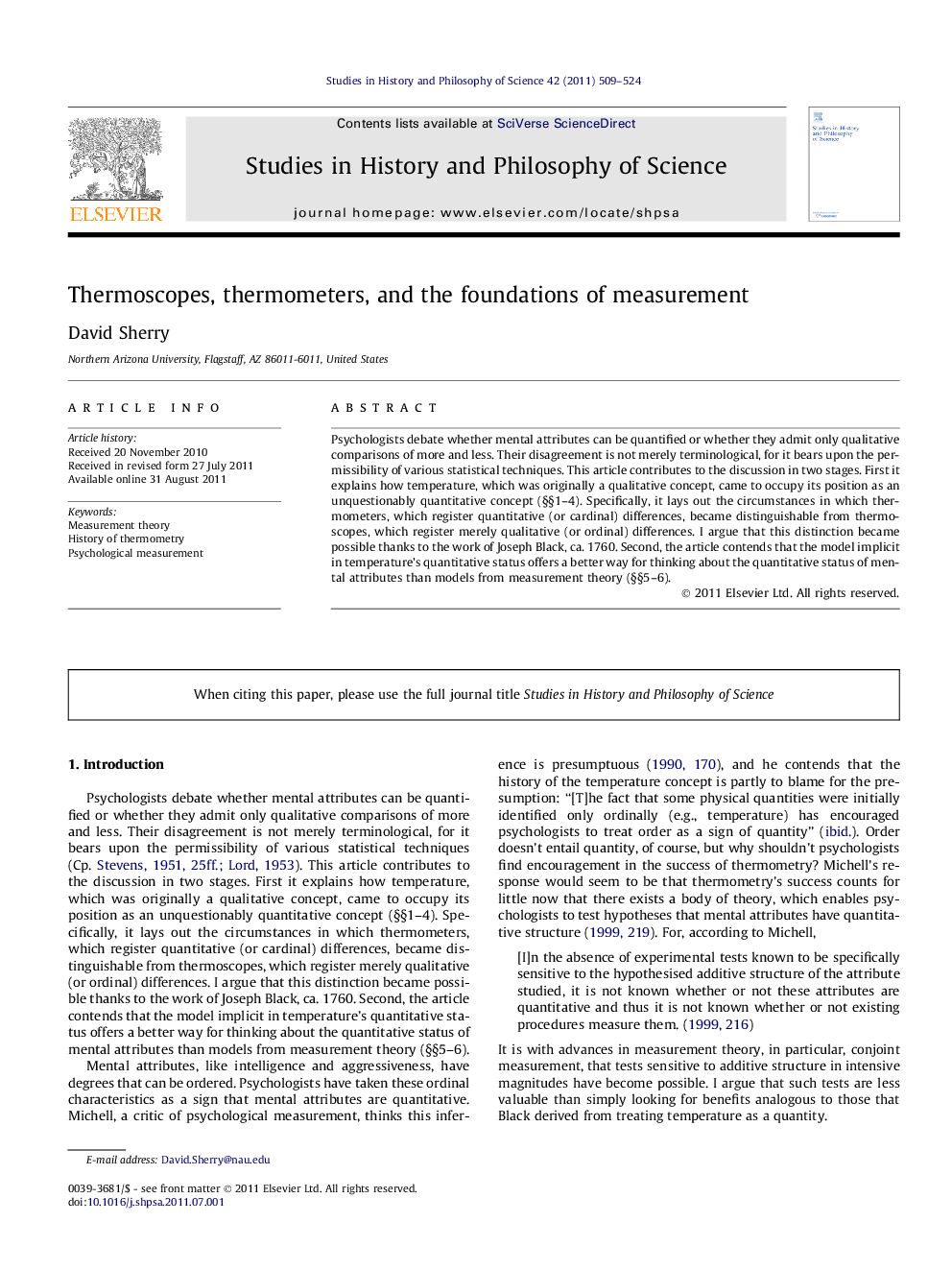| Article ID | Journal | Published Year | Pages | File Type |
|---|---|---|---|---|
| 1160925 | Studies in History and Philosophy of Science Part A | 2011 | 16 Pages |
Psychologists debate whether mental attributes can be quantified or whether they admit only qualitative comparisons of more and less. Their disagreement is not merely terminological, for it bears upon the permissibility of various statistical techniques. This article contributes to the discussion in two stages. First it explains how temperature, which was originally a qualitative concept, came to occupy its position as an unquestionably quantitative concept (§§1–4). Specifically, it lays out the circumstances in which thermometers, which register quantitative (or cardinal) differences, became distinguishable from thermoscopes, which register merely qualitative (or ordinal) differences. I argue that this distinction became possible thanks to the work of Joseph Black, ca. 1760. Second, the article contends that the model implicit in temperature’s quantitative status offers a better way for thinking about the quantitative status of mental attributes than models from measurement theory (§§5–6).
► Temperature’s quantitative character established by Black, ca. 1760. ► Temperature’s quantitative character rests on pragmatic grounds. ► Black’s achievements provide a model for judging whether a mental attribute is quantitative.
